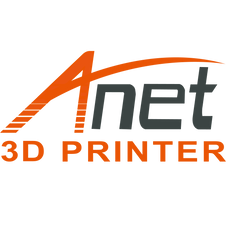Anet A8 & A8 Plus 3D Printer Complete Comparison | Pros & Cons
The Anet A8 is a quite popular 3D printer since it’s launched in 2016, and in 2018, A8 Plus 3D printer came out to meet users’ demand for larger print volume. What are the pros and cons, and differences of these two models? Let’s take a deep look into them and find out which one might be your ideal choice.
Differences between A8 & A8 Plus 3D printers
As already mentioned in the beginning, A8 Plus is developed for larger print volume. Here comes the first and the most significant difference between A8 and A8 Plus3D printer.
The A8 prints only 220*220*240mm, while A8 Plus can print max 300*300*350mm large object.
The second significant change on A8 Plus 3D printer is that it has more solid and reliable aluminum frame, but the A8 frame is made of acrylic sheets.
The third difference we should know is their print bed. A8 has an aluminum bed which doesn’t heat during 3D printing, and A8 Plus has a heat bed with a layer of insulated cotton, an aluminum heating board and a removable glass surface.
Pros & cons of A8 & A8 Plus 3D printer
The A8 and A8 Plus 3D printers have same double Z-axis rods structures, but from the aspect of their different design concepts, they have their own pros and cons.
Pros & cons of A8 3D printer
A8 3D printer sells only US$ 149, which is incredible cheap and perhaps one of the cheapest desktop FDM 3D printers worldwide.
A8 needs no heating on the print bed while printing, which means lower power consumption.
Catching fire during printing can be the most concerned issue on A8 3D printer, but it’s mainly caused by unauthorized modification on the printer. And now on V1.7 mainboard for A8, thermal runaway protection is featured in to prevent catching fire from happening.
Pros & cons of A8 Plus 3D printer
A8 Plus prints 300*300*350mm object, which is much larger than most types of 3D printers on the market.
A8 Plus is more advanced with metal frame for solid and durable operation.
The only con might be the DIY version A8 Plus. It needs half a day or more for rookie 3D printer users to assemble all parts and components together. But for experienced users, this can be a pro for enjoying the whole process of assembling it.
Tough A8 and A8 Plus have a lot of differences, but they both print in good quality and accuracy. For those whom always print small objects or components, it’s better to have an A8 3D printer to save expenses. But if you want to print large models, A8 Plus should be a better option.

Leave a comment